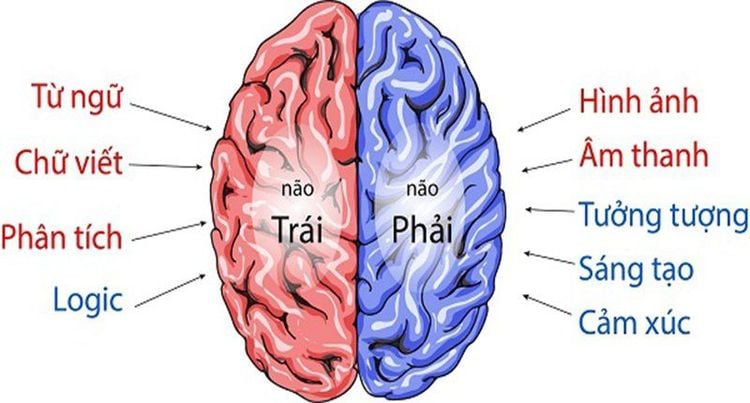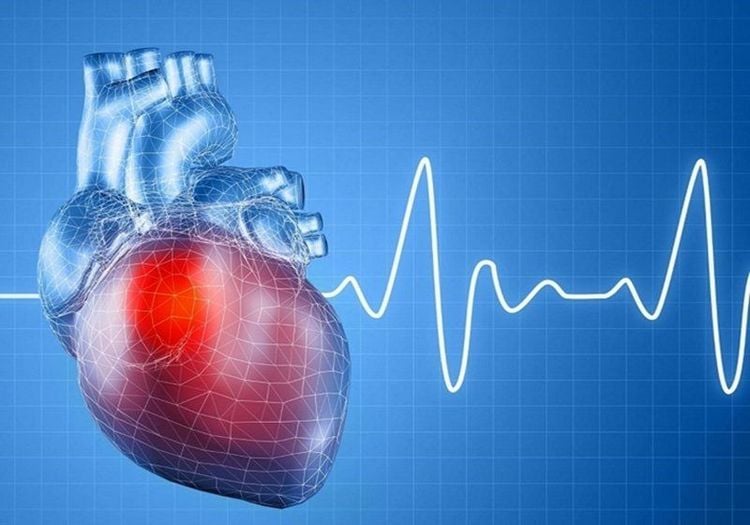This is an automatically translated article.
Some neuroscientists argue that the function of the human brain is best explained by unilateralism, which means that the right and left hemispheres of the brain perform very different functions. different and the two sides communicate through each party's connections.
1. The difference between the left and right hemispheres of the brain
Currently there are many different theories and concepts to explain the function of the right and left hemispheres of the human brain.
Researchers Michael Gazzaniga and Roger Sperry have proposed the concept of lateralization, in which the left and right hemispheres have different functions, but they communicate through each other. the physical connections of the two sides (nerves). One example of one-sided bias is language. For most people, language function is located in the left hemisphere of the brain, especially for right-handed people. The basis for the split-brain theory is often based on research that has been done on patients who have disconnected the right hemisphere from the brain to treat severe epilepsy. The split brain theory is described as the left hemisphere of the brain giving logical commands to the right hemisphere and the right hemisphere reacting with emotions based on the given commands.

Mỗi bán cầu não phụ trách những chức năng khác nhau
Brain lateralization occurs in certain functions of the brain, in which certain regions of the brain perform specific functions. Many recent studies have shown that the left and right hemispheres of the brain are used equally, which indicates a functional and physical connection between the two hemispheres of the brain (nerves).
The areas of the brain responsible for functions such as memory change depending on which hemisphere of the brain is dominant. While a person's brain may be left or right biased with age, appearance has nothing to do with whether a person's brain is skewed left or right.
2. Which hemisphere is dominant?
Although no single theory completely explains the complexity of brain functions, neuroimaging techniques reveal some distinct (asymmetrical) differences between hemispheres left and right brain, called lateralization.
Examples of these differences are: linguistic function in Broca's area and Wernicke's area in the left brain, and emotional and nonverbal function in the right brain.

Bán cầu não phải có chức năng về cảm xúc
The regions responsible for language tend to be located in the dominant hemisphere of the brain and in contrast to handedness. For example, if you are left-handed, regions of your language function are more likely to be located in the right brain. Conversely, if you are right-handed, your speech functions are more likely to be located on the left side of the brain.
2.1. Left Brain Features and Functions Left brain functions include:
Understanding the aggregate of all situations to create the big picture Controlling the movements of the large muscles used for walking Perceiving the body's position in spatial balance Nonverbal communication Emotional function Perception of smells, sounds and flavors Controls avoidance behaviors According to neuroscientific research, the left brain is also actively stimulated by new experience, controls the immune system, and is also responsible for automatic functions of e.g. breathing, heart rate and digestion.
Left-brain and right-brain psychology further describes left-brain functions including: attention to detail, fine motor skills, and the ability to convert sounds into language and translate meaning. The left brain network is also thought to control logical/analytic thinking, including math ability and problem-solving skills.

Não trái chịu trách nhiệm chức năng tự động như nhịp tim
2.2. Right brain characteristics and function The right hemisphere is thought to allow young children to understand more than less concepts, but understanding of specific numerical values is involved in the left hemisphere.
Other cognitive activities that tend to be dominated by the right hemisphere of the brain include: attention and processing of the overall visual shape of objects, emotions, and meanings of implications.
In terms of brain development, neuroscientists point out that until about the age of 3, the right hemisphere of the brain tends to be dominant in brain function.
Vinmec International General Hospital is not only famous for its professional quality in medical examination and treatment, but also for its excellent medical services, standard medical equipment and a team of well-trained doctors in both hospitals and clinics. and abroad. Therefore, Vinmec deserves to be the address for customers to visit, treat and restore their health.
To register for examination and treatment at Vinmec International General Hospital, you can contact Vinmec Health System nationwide, or register online HERE
Reference source: healthline.com, livescience .com, medicinenet.com, brainmadesimple.com













